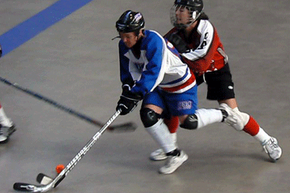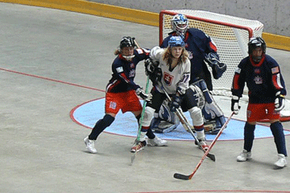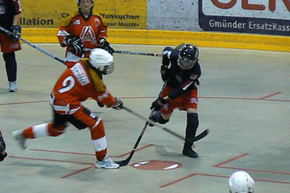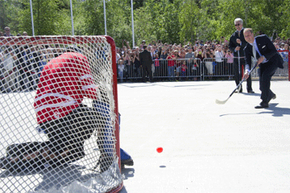In the scrappy world of street sports, games are guided by the most basic considerations -- things like weather, space, and necessity. Things like what's on hand. A baseball and catcher's mitt? A soccer ball? A hockey stick, dead tennis ball and cinder blocks?
If it's the latter, you've got the makings of the most basic game of street hockey imaginable. Truly, you don't need much -- just a stick, a ball that'll stay down, and a way to designate a boundary so you know where to shoot. Think of it as ice hockey without the ice -- and with a somewhat-reduced need for padding.
Advertisement
The goal is the same: to send the ball through your opponent's goal and to stop your opponent from sending it through yours. Of course, to this end, padding doesn't hurt, especially where inline skates are involved. But even when the footwear is sneakers, making for a slower game, some protective equipment is recommended -- after all, you're playing on asphalt. There's not a whole lot of give.
So, how to get into this game of hockey you can play outside in the summer months? First, you'll need some equipment. While the needs are pretty minimal as far as absolute necessity goes, the street-hockey arsenal can get a lot more involved if you play in one of the hundreds of organized leagues throughout North America…
Advertisement





